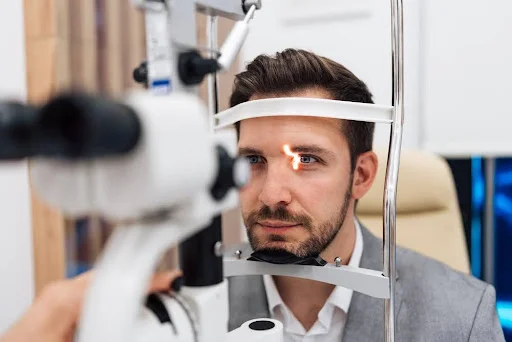If you’re over 40 and experiencing subtle yet consistent changes in your vision, it might be time to pay closer attention. Cataracts often begin developing long before noticeable impairment sets in — and early detection is key to preserving clear, sharp vision or Early Signs of Cataracts. Consulting an ophthalmologist Rancho Mirage can help identify cataracts in their early stages and guide you through appropriate treatment options.
Cataracts occur when proteins in the eye’s natural lens break down and clump together, forming cloudy areas that disrupt the way light passes through. This process is gradual and usually painless, which is why many people delay seeking help — often until vision loss becomes unavoidable.
Understanding the Progression of Cataracts
In the earliest stages, cataracts don’t cause total vision loss or Early Signs of Cataracts. Instead, they subtly distort how we see the world, especially in situations that require clarity or precision. The lens loses its transparency, and light entering the eye gets scattered, causing visual confusion. These early distortions might feel like nothing more than a need for a new eyeglasses prescription, which is why cataracts often go undiagnosed for years.
While age remains the most common risk factor, cataracts can also form due to prolonged UV exposure, chronic illnesses like diabetes, steroid medication use, or past eye surgeries. The earlier they’re diagnosed, the easier it becomes to manage them — either through lifestyle changes or timely surgical intervention.
Stay in the loop—related posts crafted to fuel your passion for learning more.
Blurry Vision and Its Gradual Onset
One of the most common early symptoms of cataracts is blurry or cloudy vision or Early Signs of Cataracts that doesn’t improve with corrective lenses. People often describe it as though they’re looking through a fogged-up window. This can affect just one eye or both, and in some cases, the clarity difference between the two eyes can be stark.
This visual haze makes tasks such as reading, watching TV, and recognizing faces more difficult. It may not happen overnight, but as the cataract progresses, you might start holding reading materials closer or increasing brightness settings on devices — subtle compensations that hint at a deeper problem.
Sensitivity to Light and Night Glare
As cataracts develop, the eye’s ability to process light accurately diminishes. You may find yourself becoming increasingly sensitive to bright lights or sunlight. Glare from headlights during night driving becomes particularly problematic, often accompanied by starbursts or halos that make roads appear dangerously unclear.
This isn’t just inconvenient — it can pose real risks when performing daily activities. Cataracts can also affect contrast sensitivity, making it hard to distinguish objects from their backgrounds in low-light environments, such as a dark room or nighttime setting.
Color Distortion and Yellowing
As the lens becomes increasingly clouded, it filters the light entering the eye differently. You may start noticing that colors appear faded, muted, or yellowed. Blues and purples may be particularly difficult to distinguish. This is a direct result of the lens blocking some wavelengths of light more than others — a subtle but powerful shift that impacts daily perception.
Interestingly, many patients only realize how much their color vision or Early Signs of Cataracts had deteriorated after undergoing surgery and suddenly seeing the vibrancy of the world again.
Changes in Prescription and Double Vision
Frequent changes in your eyeglass or contact lens prescription — especially within short time frames — can indicate that cataracts are altering the refractive properties of your eye. It’s a common early warning sign often overlooked or misattributed to age-related vision changes.
Additionally, some people experience monocular double vision — seeing two images out of one eye. Unlike neurological causes of double vision, this is localized to the affected eye and results from inconsistent light scattering on the retina caused by lens opacities.
When Does Cataract Surgery Become Necessary?
While not all cataracts need to be removed immediately, surgery becomes the recommended solution once the condition starts interfering with your quality of life. Whether it’s struggling with night driving, difficulty reading, or inability to perform hobbies due to impaired vision, these are clear indicators that it’s time to consider cataract surgery Rancho Mirage.
Modern cataract surgery is safe, highly effective, and often takes less than 30 minutes. It involves removing the clouded lens and replacing it with a clear intraocular lens (IOL). Advances in lens technology also mean that many patients see improvements in distance and near vision, reducing dependence on corrective eyewear.
What You Can Do Next
Detecting cataracts early is crucial, but it requires awareness. If you or someone you know has been experiencing gradual vision changes — especially those described above — the best course of action is to seek a comprehensive eye exam. Early diagnosis not only improves outcomes but allows for proactive management, which is always preferable to reactive treatment.
Your adventure continues—explore more content that turns interest into action.






